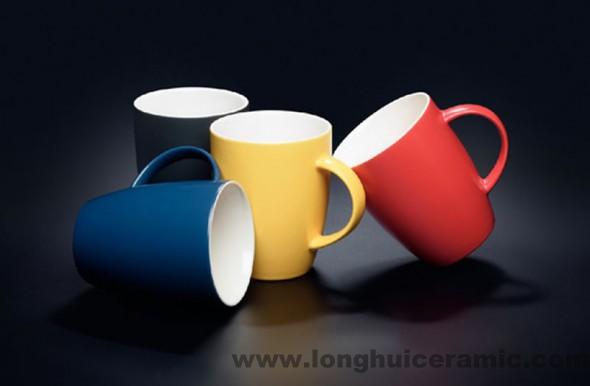Home > Ceramic knowledge

"Ceramic" is a generic term, "Tao" and "Porcelain" in texture, the physical properties there are very different. China was among the first to create one of the countries of pottery, porcelain was one of the first invention.
The emergence of pottery dating back about 1 million years or so, China has entered the New Stone Age, began to settle in life, water, with objects of daily life, such as the need to promote the invention of pottery. Chinese pottery wider distribution, mainly in the Yangtze River and Yellow River Basin. Yangshao culture which is the New Stone Age culture more representative of the type, characterized by painted pottery, also known as the "painted pottery culture", which derived Banpo and Miao Digou two types of decorative patterns, has high artistic value. Majiayao culture is the culture of the late New Stone Age type than a little late Yangshao culture, since about 5000. Black painted pottery is the second after another great invention, since about 4000 the Longshan Culture period, there has been a unique process of eggshell pottery. In recent years, Shandong, Hebei and more in the vicinity of imitation, there is a high value for collection. Qin and Han Dynasty pottery figurine of China's ancient sculpture of the peak figure, so that the ceramic technology and the arts reached a high position. In addition, three of the color of the Tang Dynasty, the Ming and Qing dynasties such as Yixing, China is an important aspect of pottery relics, it is worthy of collection and research.
Ceramics (Ceramics), the general term for pottery and porcelain. Ceramic refers to the traditional concept of all inorganic non-metallic minerals such as clay as raw material of artificial industrial products. It consists of clay from or containing a mixture of clay by kneading, molding, and calcined made of a variety of products. By the most rough-earth to the most refined of the fine pottery and porcelain are it. For its main raw materials are derived from natural silicate minerals (such as clay, feldspar, quartz, etc.), and glass, cement, ceramic, refractory material, such as industry, with an "industrial silicate" (Silicate Industry ) Area.
The history of ceramics is the history of Chinese civilization is an important part of China, as one of the four ancient civilizations, human development and social progress made outstanding contributions, including the invention of ceramics and the development of a more unique significance , The history of China-North Korea on behalf of all the different artistic styles and different technical characteristics. English of "china" China not only mean, ceramics and mean, clearly demonstrates China is the "hometown of pottery."
As early as the Europeans have porcelain manufacturing technology over 1000 years ago, Chinese people have created a very fine ceramics. China is the world's first application of one of the countries pottery, and porcelain from China for its high artistic quality and relevance of the world have attracted much praise.
The so-called pottery and porcelain refers to the use of plastic ware and porcelain clay quarry to do matrix, quartz and feldspar, and other raw materials-glaze, and through the forming, drying, firing from the products, mainly for daily use, art, and architecture Three pottery. Archaeological discoveries have proved that the Chinese people as early as the Neolithic Age (about 8000 BC) invented pottery. The emergence of primitive society with advanced agricultural production so that the ancestors of the Chinese people lead a life of a relatively fixed, the objective of pottery with the demand. In order to improve people's lives easier, improve the quality of life, gradually burn through the burning out of the clay pottery.
With the development of modern science and technology, and the past 100 years there have been many new varieties of ceramics. They no longer use or the use of small clay, feldspar, quartz and other traditional ceramic materials, but the use of other special materials, and even extended to non-silicate, non-oxide scope, and there have been a lot of new technology. The United States and some European countries have literature "Ceramic" understanding of the term for a variety of solid inorganic non-metallic materials known. Therefore, the meaning of ceramics in fact go far beyond the traditional concept in the past the narrow.
To date, the Definition of ceramics may be generally described as follows: The ceramic is aluminum silicate minerals such as oxides or as the main raw material, in accordance with the intention of people through specific physical and chemical processes at a high temperature to a certain degree of Temperature and atmosphere made of a certain type of rock technology. Glazing may be on the surface or glazing, porcelain has a number of different levels of transparency and a half, the species by one or more of the crystal and amorphous or cement and clinker with pores or inclusions, such as micro-structure.
Portland ceramic industry is one of the main branches of industry, belong to the scope of inorganic chemical industry. However, modern science and highly integrated with each other to infiltrate from the ceramic industry as a whole manufacturing process to analyze the contents of its complex and involve wide, is not only Using the theory of inorganic chemistry can be summarized.
A wide variety of ceramic products, their chemical composition. Mineral composition, physical properties, as well as manufacturing methods, often close to each other staggered, no boundaries, and in the application there is a huge difference. Therefore, it is difficult to be summed up in a few hard and fast system, a detailed classification of the various different view, the international community to now there is no uniform classification.
Contact: Alice
Phone: +86-15173378201
Tel: +86-731-82252404
Email: alice@longhuiceramic.com
Add: Chengnan Road, Liling, Hunan, China.